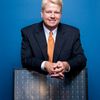Kudos to Scientific American for putting out a special issue on "Better, greener, smarter cities."
The issue is chock-full of interesting data, ranging from the technological to the anthropological. But what I liked most about the edition was its emphasis on green building as the future of urban development. With lessons from China and creative solutions being implemented worldwide, there's no doubt that our cities are ready to take the next step towards a greener future.
One feature interactively maps the bold solutions cities across the globe have made to be more efficient. Rizhao, China, has solar hot water. Orkney, Scotland, has wave power. My hometown of Washington, D.C. (although truthfully, I'm a Bostonian through-and-through) has white rooftops. San Francisco has digital parking meters that alert your cell phone when a space nearby opens up. And New York City has it all: high-efficiency windows, hybrid taxis, low-flow appliances, underwater turbines and more.
That's why the Big Apple makes every list of Top 10 Cities for Green Living across all six of Scientific American's categories -- first for greenest thinking, first for most walkable, second for best public transportation systems, eighth for most bikeable, and 10th for most energy-efficient buildings. Not to mention first for overall green living performance! I hate to give New York credit for anything - especially when it comes to baseball - but this is truly remarkable.
But let's face it: it's easy for cities to be efficient. People live closer together, travel shorter distances and have more access to public transportation and green design. What about the suburbs?
Scientific American's issue featured an article titled, "Can suburbs be designed to do away with the car?" to answer questions about the future of public transit in this era of "new urbanism." The article points to a suburb not far from Washington, D.C. -- King Farm in Rockville, Md. -- where some exciting plans for light rail development were squashed by residents unwilling to give up their wide roads and green medians -- originally designed for the explicit purpose of hosting a train system.
With the rivalry of sorts that we Washingtonians have developed towards NYC dwellers, you'd think we'd be more willing to accept the efficiencies of a broader public transportation network. We've made some pretty green developments -- ranking second behind Los Angeles for most energy-efficient buildings -- but when it comes to getting around town efficiently, New York City is kicking our butts.
Still, we are only two spots shy of the overall greenest living performance. The only cities we have to overcome are San Francisco and the Big Green Apple. It will take some work, but if we are to fulfill the expectation of a better, greener, smarter city, we all need to get on board.
